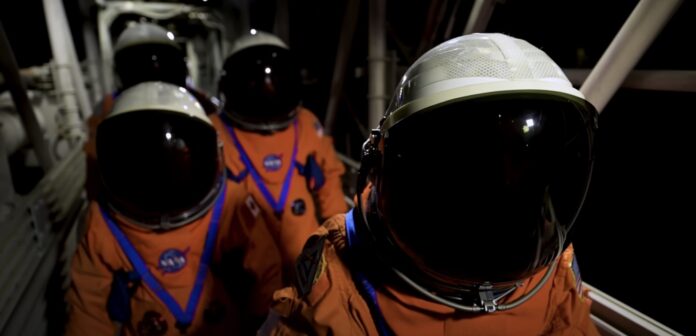OPINION | This article contains opinion. This site is licensed to publish this content.
After more than 50 years, NASA has confirmed that humans are going back to the moon.
NASA announced four astronauts who will make up the crew of Artemis II. The crew includes Reid Wiseman, Victor Glover, and Christina Koch, and Jeremy Hansen.
They're going to the Moon! Introducing the #Artemis II astronauts:
Reid Wiseman (@astro_reid), Commander
Victor Glover (@AstroVicGlover), Pilot
Christina Koch (@Astro_Christina), Mission specialist
Jeremy Hanson (@Astro_Jeremy), Mission specialisthttps://t.co/Hy1110MOEi pic.twitter.com/SeETL5iURu— NASA's Johnson Space Center (@NASA_Johnson) April 3, 2023
This mission will launch in November 2024 and last 21 days.
This mission will not land on the Moon. Glover will become the first African American to ever go to the moon. Koch will become the first woman to ever go to the moon.
Here they are. @SenBillNelson announces the #Artemis II crew, the next astronauts to fly around the Moon:@Astro_Christina@Astro_Jeremy@AstroVicGlover@Astro_Reid
We go together. https://t.co/XdUizg2Wye pic.twitter.com/6Yo4I2lKeJ
— NASA (@NASA) April 3, 2023
“Together we will usher in new era of exploration for a new generation of star sailors and dreamers—the Artemis generation,” NASA Administrator Senator Bill Nelson said during the press conference.
If successful, the next mission will be Artemis III in November 2025, which will land on the moon.
More from IFL Science:
Artemis II follows on from the successful test of Artemis I, which flew around the Moon at the end of 2022. The mission will last a maximum of 21 days and it is expected to launch in November 2024. This will also be the first astronaut launch from Launch Complex 39B at the Kennedy Space Center since Space Shuttle Discovery in 2006.
Artemis II will be the furthest humans have gone since Apollo 17 in 1972. They will fly as close as 10,000 kilometers (6,100 miles) from the far side of the Moon. The mission is the first crewed test flight for NASA’s megarocket, the Space Launch System (SLS), and the Orion spacecraft. Artemis I was hit by many necessary delays, but the success of the initial test flights for both the SLS and Orion was worth the wait.
The SLS rocket was the most powerful rocket ever to launch and it didn’t just get a passing grade, it excelled. It outperformed the many expectations NASA and beyond had for it. The Orion capsule complete more than 161 test objectives and of those, 20 were added during its flight because it was doing so well. The European-built service module generated 20 percent more power and used 25 percent less energy than predicted, a very welcome fact for future missions.






